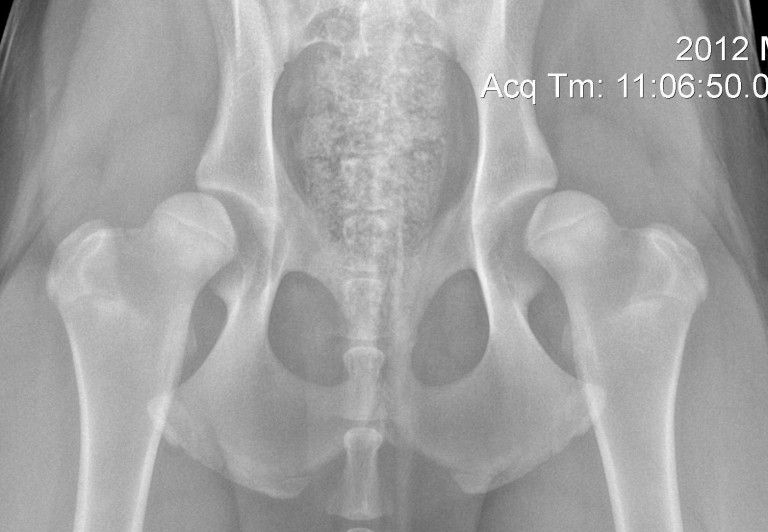Introduction
Arthritis is a common condition in dogs that causes pain and inflammation in the joints. It often develops as dogs age, but can also affect younger dogs. Arthritis occurs when the cartilage that cushions the bones breaks down, leading to swelling, stiffness and loss of joint mobility.
Studies show that arthritis affects about 20% of dogs over 1 year old (https://www.ncbi.nlm.nih.gov/pmc/articles/PMC7198754/). Certain breeds like Golden Retrievers and Labradors tend to have higher rates of arthritis. The annual prevalence of diagnosed arthritis in dogs under veterinary care in the UK is around 2.5% (https://www.ncbi.nlm.nih.gov/pmc/articles/PMC5884849/).
Detecting arthritis early is crucial to slow progression and improve quality of life. Symptoms like limping, difficulty rising and decreased activity should not be ignored. The earlier arthritis is diagnosed and treated, the better the long-term outcome. That’s why it’s important for dog owners to regularly monitor for signs of arthritis.
Common Signs of Arthritis
Some of the most common signs of arthritis in dogs include:

Difficulty standing up or lying down – Dogs with arthritis often have trouble getting up after lying down, and may show signs of pain when moving between positions. They may take longer to stand up or need help from their owner to get up. Older dogs may also have difficulty lying down comfortably due to joint stiffness and pain.
Limping – Dogs with arthritis tend to limp, favoring their sore joints. The limp may come and go, get better or worse, or affect different legs. Limping on a hind leg or slowing down during walks are common arthritis symptoms.
Reduced activity/lethargy – Arthritic dogs tend to be less active and playful. They may seem more lethargic, sleep more, and be reluctant to go on walks or play. This is due to discomfort and pain caused by inflamed joints.
Difficulty climbing stairs – Arthritis can make it very painful for dogs to climb up and down stairs. Affected dogs may hesitate, act stiff, or refuse to use the stairs completely. This symptom often appears gradually over time.
Other signs to watch for include yelping when touched, irritability, appetite changes, and licking or biting at sore joints. If your dog shows any of these arthritis warning signs, see your vet for an exam and diagnosis. Early treatment can help slow disease progression and relieve pain. Source.
Risk Factors

Some dogs are more prone to developing arthritis than others. The main risk factors include:[1]
Age
Arthritis becomes more common as dogs age. The cartilage and fluid that cushions joints starts to wear down over time. Nearly 20% of dogs over 1 year old have some form of arthritis, and this increases to over 50% in dogs older than 10 years.[2]
Obesity
Carrying excess weight puts more pressure on joints and can hasten arthritis development. Over 50% of dogs classified as obese have some degree of arthritis.[1] Keeping your dog at a healthy weight can help prevent and manage joint issues.
Genetics
Some breeds are genetically prone to arthritis, including Labrador Retrievers, Golden Retrievers, German Shepherds, and Rottweilers. Responsible breeding practices can help reduce this risk.[2]
Joint Injuries
Prior injuries to joints, ligaments or bones can increase the chances of developing arthritis. Activities like intense exercise, jumping down frequently, or sustaining traumatic injuries raise the risk.[3]
Being aware of these risk factors can help dog owners monitor for early signs of arthritis. Catching it early allows for quicker treatment to improve quality of life.
Diagnosis
Veterinarians diagnose arthritis in dogs through several methods, including a thorough physical examination, x-rays, and blood tests.
During the physical exam, the veterinarian will check for signs of pain, inflammation, stiffness, and reduced range of motion in the dog’s joints. They will palpate the joints and limbs to feel for areas that are painful, swollen, or warm – all indicators of inflammation. The vet will also assess the dog’s gait and watch them walk and run to check for lameness.

X-rays allow the vet to visualize the bones and joints. They can look for signs of arthritis like bone spurs, narrowed joint spaces, calcium deposits, and bone remodeling. X-rays will show the vet which joints are affected and how severely.
Blood tests may also be run to check for underlying causes of arthritis like hypothyroidism or to assess liver and kidney function before prescribing certain medications. Bloodwork can also help rule out other diseases.
According to the ASPCA (https://www.aspcapetinsurance.com/resources/symptoms-of-arthritis-in-dogs/), “To diagnose arthritis, your veterinarian will perform a physical exam and check the joint areas for pain. Blood tests and X-rays may be ordered to rule out other causes of joint pain, such as fractures, ligament or cartilage damage, and bone cancer.”
Treatments
There are several treatment options for managing arthritis in dogs, including weight management, exercise, physical therapy, medications, and supplements according to VCA Animal Hospitals.
Weight management through proper diet and exercise is important, as excess weight puts more strain on joints. Low-impact exercise like swimming and walking can help maintain muscle mass and joint flexibility. Physical therapy techniques like massage, stretching, and range-of-motion exercises may provide pain relief.
Medications like NSAIDs help control pain and inflammation. Joint supplements containing glucosamine and chondroitin may help rebuild cartilage. Anti-inflammatory plant-based options like turmeric and CBD oil are sometimes used as well. Multimodal therapy combining several treatments often provides the best results according to Colorado State University.
Treatment plans should be customized to each dog’s specific needs and situation. A veterinarian can advise on the most suitable options for managing arthritis pain and mobility issues.
Managing Arthritis
There are several techniques you can use at home to help manage your dog’s arthritis pain and improve their mobility and comfort:
Providing ramps and stairs can make it easier for your dog to move around the house and get up on furniture. Install ramps or steps wherever your dog needs to climb, like on the bed or couch. Make sure ramps have a gentle incline and surfaces with good traction.
Gentle massage can help relax tense muscles and stimulate blood flow. Focus on massaging the joints, muscles, and areas where your dog seems stiff or sore. Be very gentle and stop if your dog shows signs of discomfort.
Hydrotherapy involves exercising your dog in a warm water pool or on an underwater treadmill. The water provides gentle resistance and support for building muscle strength while reducing strain on joints. Most animal rehab facilities offer hydrotherapy programs.
Providing soft, supportive bedding is important for dogs with arthritis. Use thick orthopedic foam beds, soft blankets, and washable covers. Place beds in easy-to-access spots around the house so your dog always has a comfortable place to rest.
These at-home techniques, combined with medications and supplements prescribed by your vet, can make a big difference in managing arthritis pain and helping your dog stay active and comfortable. Check with your vet to develop the best care plan for your dog’s needs.
Quiz Introduction
This quiz consists of 10 multiple choice questions designed to help you determine if your dog may be showing signs of arthritis. Please note that this quiz is not meant as a diagnosis. Only your veterinarian can provide an official diagnosis through a physical exam and diagnostic tests.
For each question, choose the answer that best matches your dog’s symptoms. At the end of the quiz, you will receive a score along with recommendations. A higher score indicates your dog may be exhibiting common arthritis symptoms. However, even a low score does not necessarily mean your dog is arthritis-free.
Keep in mind that some signs of arthritis can be subtle, especially in the early stages. Pay close attention to any changes in your dog’s mobility, behavior, or activity levels. The purpose of this quiz is simply to help dog owners determine if their pet’s symptoms warrant a veterinary exam.
Quiz Questions
Answer the following questions to determine if your dog may have arthritis:
Age
How old is your dog?
- Under 5 years
- 5-8 years
- Over 8 years
Weight
Is your dog overweight?
- No, my dog is at a healthy weight
- Yes, my dog is slightly overweight
- Yes, my dog is very overweight
Activity Level
Has your dog’s activity level decreased recently?
- No decrease
- Slight decrease
- Significant decrease
Symptoms
Is your dog exhibiting any of these symptoms?
- Stiffness after rest
- Limping or favoring a leg
- Difficulty standing up
- Reluctance to jump or climb stairs
Medical History
Does your dog have any prior joint injuries or conditions?
- No history
- Past joint injury
- Hip or elbow dysplasia
- Other joint condition
Quiz Scoring
Based on your responses, your dog’s likelihood of having arthritis is:

0-3 points: Low likelihood
Your dog is showing limited signs of arthritis at this time. Continue monitoring them for changes.
4-6 points: Moderate likelihood
Some of your dog’s symptoms may indicate early arthritis. Consult with your veterinarian.
7-10 points: High likelihood
Many of your dog’s behaviors align with arthritis. Schedule an exam with your veterinarian as soon as possible.
While this quiz can provide a general idea of your dog’s risk, only a veterinary exam and consultation can provide an official arthritis diagnosis and treatment plan. Be sure to discuss all of your dog’s symptoms and this quiz result with your veterinarian to determine next steps for their care.
Additional Resources
If you suspect your dog may have arthritis, it’s important to see your veterinarian for a proper diagnosis and treatment plan. Here are some additional resources on canine arthritis:
- American Kennel Club: Is Your Dog Showing Signs of Canine Arthritis?
- VCA Hospitals: Osteoarthritis in Dogs
- PetMD: Arthritis and Joint Disease in Dogs
Annual wellness exams with your veterinarian can help detect arthritis early and ensure your dog receives the best treatment and quality of life. Staying on top of your dog’s health with regular vet visits is key.